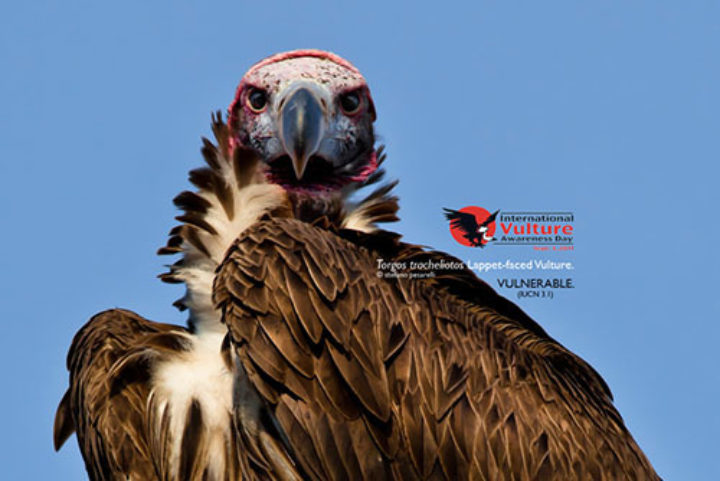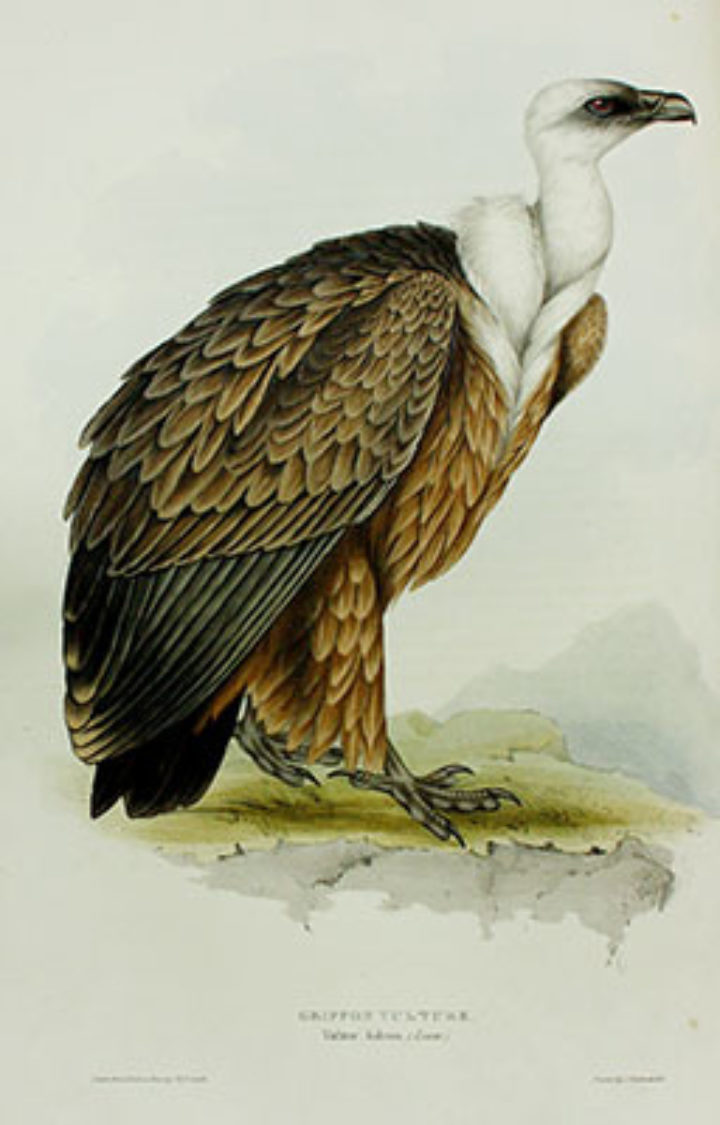September 2013: Vulture Awareness Day
Published on 2nd September 2013
International Vulture Awareness Day 2013—7 Sept

This year, Saturday 7 September marks International Vulture Awareness Day, an internationally recognised event that focuses on the conservation and protection of vultures. With many vulture species in rapid decline and critically endangered, identifying the threats posed to these magnificent raptors and collectively responding with viable conservation solutions is of great importance.
Our relationship with vultures has often been skewed by their rather macabre public image—impending death or threat is often artistically conveyed by circling vultures. This relationship has been around for some time, as evidenced in Perry’s Arcana, published in 1810–11, where it is stated that, in relation to the Condor Vulture: “Some writers have confidently affirmed that it has been known to carry away Children."
Vulture Basics
In reality, vultures are the ‘caretakers’ of an ecosystem, with their scavenging playing an essential role in controlling the spread of disease. Vultures are found in every continent, with the exception of Antarctica and Oceania. They are split into old world and new world vulture species, with old world species found in Africa, Europe and Asia, belonging to the family Accipitridae. New world species are found in the Americas and belong to the family Carthartidae. Though they look outwardly similar to old world species, new world vultures are more closely related in morphology and behaviour to storks (many, but not all, new world vultures have a developed sense of smell, unlike old world vultures which have not). This is a perfect example of convergent evolution.
Identified Threats
Many Asian species have suffered a rapid population decline; to name just a small selection, the red-headed vulture (Sarcogyps calvus), the slender-billed vulture (Gyps tenuirostris) and the Indian vulture (Gyps indicus) have all been classified on the IUCN red list as critically endangered, in 2007 and 2002 respectively. One of the problems has been the use of the cheap and widely available non-steroid anti-inflammatory drug (NSAID) Diclofenac in livestock to prolong their working lifespan. Tradition has been to leave expired livestock to the vultures, but Diclofenac is poisonous to vultures, leading to renal failure in the raptors. Decline in these raptors has led to increased hygiene problems in certain Asian areas—vultures play a major role in the balance of an ecosystem. Other threats to vultures globally include illegal trade in vulture body parts, lead poisoning from gunshots, electrocution from power lines and reduced food availability. Vulturine fish eagles (Gypohierax angolensis) in the Niger Delta, Nigeria are in decline due to oil pollution.
Ways Forward
The Vulture Specialist Group of the IUCN’s Species Survival Commission (SSC) spoke at a Pan-African Summit in 2012 to assess the key threats and outline possible conservation actions. Additionally, the RSPB has organised a project named ‘Saving Asia’s Vultures from Extinction’ (SAVE) which has started to establish Vulture Safe Zones (VSZ) to protect remaining populations. By early 2012 three sites had been provisionally set out in India, with two more ear-marked later the same year. The SAVE project aims to gain success by engaging with pharmacies, conservationists, farmers and policy makers.

This event is being supported by many institutions and sanctuaries around the world. To learn more about how you can be part of International Vulture Awareness Day go to www.vultureday.org/2013, and visit vultureday.wikispaces.com for further info and resources.
(Image right: Torgos tracheliotos, Stefano Pesarelli - wikispace).
Vultures in the Linnean Society Library


Images above:
Left - Griffon Vulture, Gould’s Birds of Europe
Right - Sociable Vulture, illustration from 'A History of the Birds of Europe Not Observed in the British Isles' by Charles Robert Bree (1811-86), published 1867
